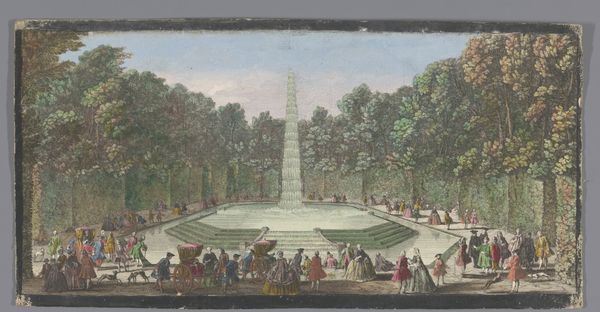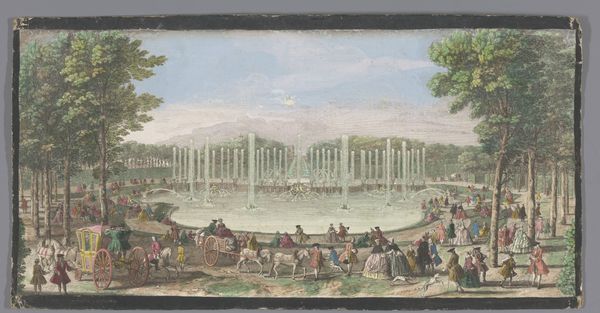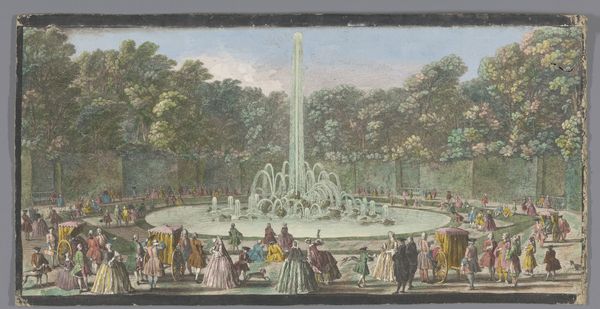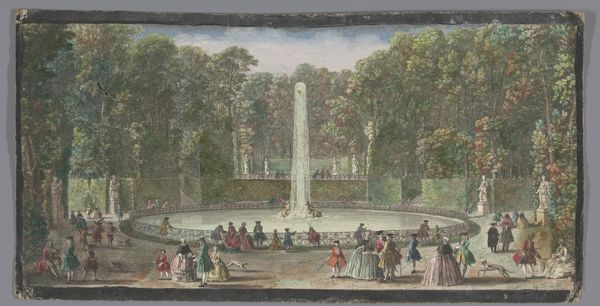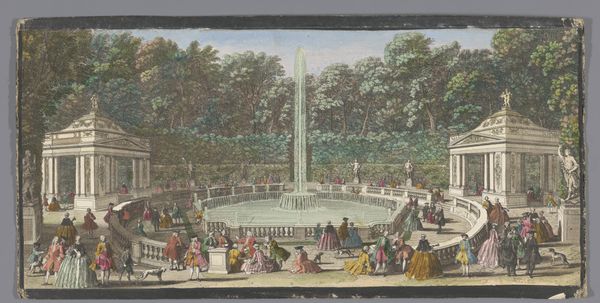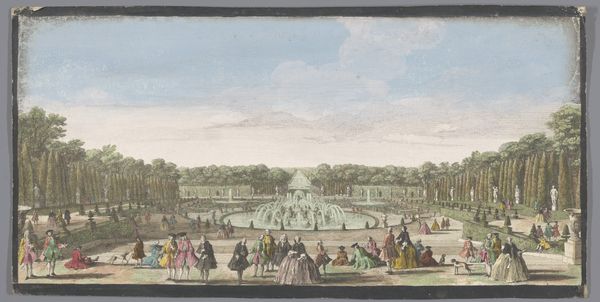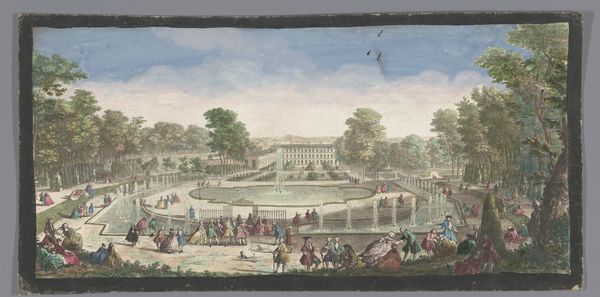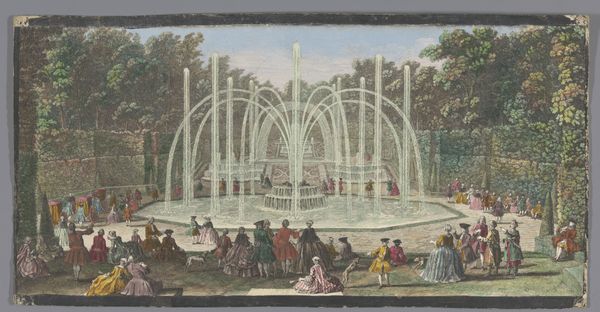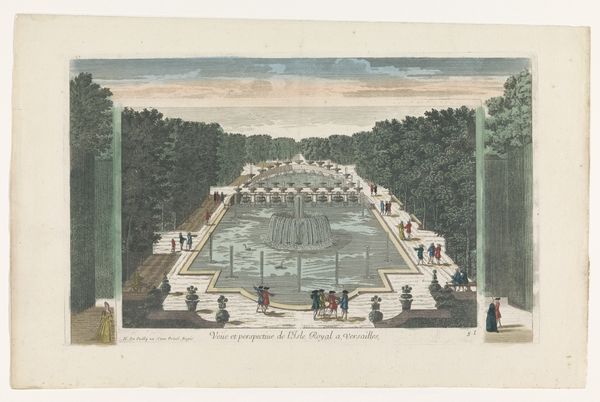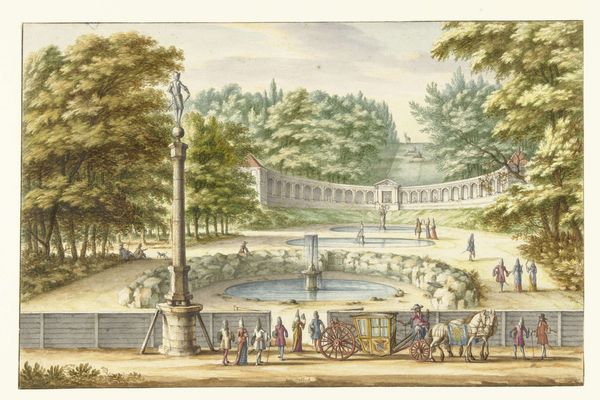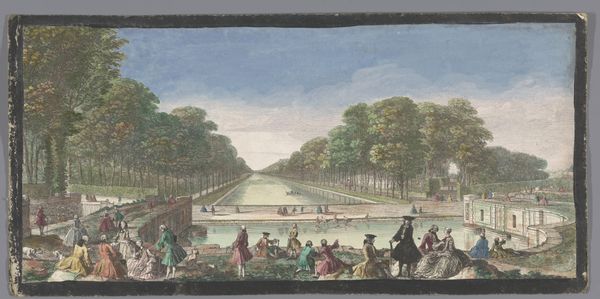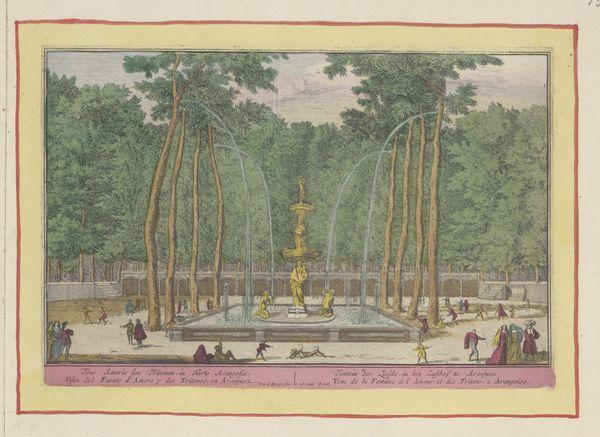
painting, watercolor
#
garden
#
water colours
#
painting
#
landscape
#
watercolor
#
coloured pencil
#
genre-painting
#
academic-art
#
rococo
Dimensions: height 242 mm, width 479 mm
Copyright: Rijks Museum: Open Domain
Curator: Here we have an 18th-century watercolor titled "Gezicht op het Bassin d'Apollon in de Tuin van Versailles," which translates to "View of the Apollo Basin in the Garden of Versailles." Editor: The first thing that strikes me is how airy and almost weightless the whole composition seems. The delicacy of the watercolor medium really conveys a sense of leisure. Curator: Absolutely. The medium is critical. Watercolor, with touches of colored pencil, allows for transparency and captures the light reflecting off the water. Think about the context, though. Versailles wasn't just a palace; it was a stage for power, an explicit display of Louis XIV's control. Editor: I see your point, and the presence of the strolling figures reinforces the spectacle. But looking at how the fountain dominates, and the meticulously designed garden extends into the background—it reads to me like an engineering feat. This level of control over nature involved considerable resources. Curator: Indeed. And who were those resources extracted from? Consider the working class, burdened with taxes, completely excluded from this manicured reality. The architecture is more than an aesthetic achievement; it's an assertion of social hierarchy. Editor: But the choice of watercolor itself resists monumentality. While the gardens and fountains required vast amounts of stone and labor to construct, this artwork’s materials point towards ephemerality and the art of depiction rather than material demonstration. It suggests maybe some degree of internal tension, perhaps, between reality and its portrayal? Curator: That's a nuanced reading. And maybe there is value in considering both. The meticulous detail speaks to the Academy's influence on artistic representation during that period, with this view of the garden, with its controlled symmetries. The gardens were created with a similar impulse. Editor: The scene overall does carry a heavy mood and a sense of imposed order. Still, in contrast to, say, an oil painting commissioned by the court, the relatively modest and perhaps informal nature of the watercolor gives one pause. Curator: Ultimately, the watercolor offers us an insight not just into Versailles itself but the values and contradictions inherent in the French court. We have this incredible tension here, as we think about gender roles and racial inequalities and how this piece performs, knowingly or unknowingly, within those broader societal contexts. Editor: And to think it all stemmed from a few carefully selected pigments and the controlled movement of water and pencil on paper, with the intention of capturing and reshaping, maybe subtly questioning, a world of material and social grandeur.
Comments
No comments
Be the first to comment and join the conversation on the ultimate creative platform.
